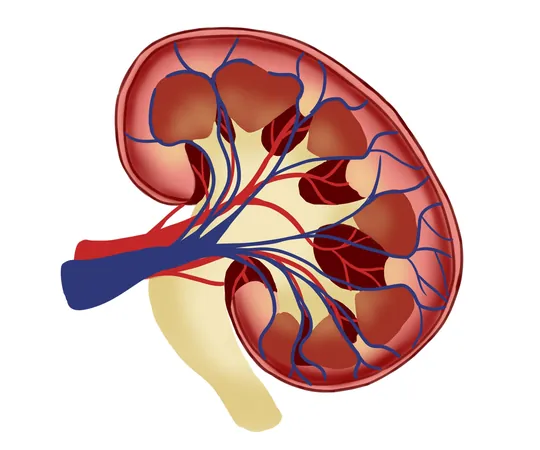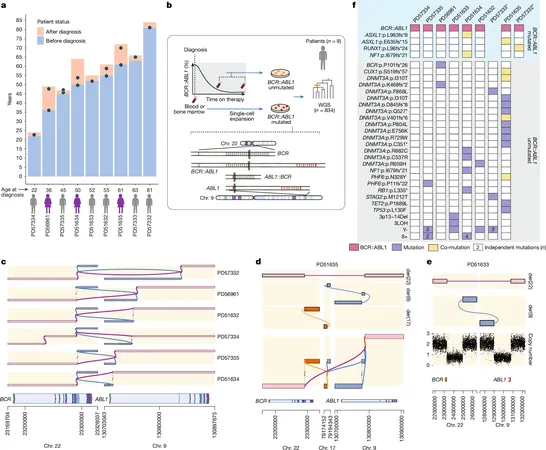
Revolutionary Discovery in Tracking Extracellular Vesicles Could Pave the Way for Innovative Treatments in Polycystic Kidney Disease
2025-04-03
Author: Wei
Introduction
Polycystic kidney disease (PKD) is a prevalent genetic disorder that severely damages kidneys by forming painful cysts, often leading patients towards dialysis or transplantation as their only treatment options. With over 12.4 million individuals affected globally, new research from Rutgers University reveals significant insights into the disease that might lead to groundbreaking therapies.
Key Findings
A recent study published in the prestigious journal Nature Communications by Inna Nikonorova, a research assistant professor in the Genetics Department at Rutgers School of Arts and Sciences, unveils a novel method of identifying and tracking the materials carried by extracellular vesicles (EVs). These microscopic structures, once dismissed as mere cellular waste, are now recognized for their critical roles in the progression of various diseases, including cancers, neurodegenerative disorders, and renal diseases like PKD.
Maureen Barr, a respected professor of genetics and co-author of the study, expressed her enthusiasm: "Inna was able to identify proteins traveling alongside polycystic proteins within EVs that were previously unknown. This discovery is incredibly exciting for researchers focusing on PKD."
The Role of Extracellular Vesicles
Extracellular vesicles serve dual purposes: they can support healing and regeneration by delivering beneficial proteins, but they can also perpetuate diseases by carrying toxic molecules. The challenge that remains, however, is understanding how these cargos are selected and packed into EVs.
Research Methodology
To delve deeper into this conundrum, Nikonorova and Barr focused on EVs that transport PKD gene proteins and related materials. Notably, mutations in PKD proteins, known as polycystins, are closely linked to the illness's progression. To visualize the paths of these polycystins, Nikonorova developed a specialized labeling technique using C. elegans, a laboratory worm characterized by its transparent body and quick growth cycle. By employing a green fluorescent protein that binds to polycystin-2, she was able to illuminate the journey of these proteins as they traversed the worm's body.
Innovative Techniques
"This technique is like shining a flashlight in a dark room, allowing us to follow the polycystins as they move," Nikonorova explained. "We can see exactly where they go and how they interact."
Proximity Labeling and Discoveries
Utilizing a method called "proximity labeling," Nikonorova uncovered the mechanisms by which polycystins are packaged into EVs, as well as the accompanying proteins they associate with during their travel. Unlike earlier studies that merely cataloged the proteins found in EVs, this research takes a bold step forward by exploring the functional relationships between the proteins and polycystins.
Future Outlook
As researchers delve deeper into the workings of EVs, this innovative approach offers hope not just for a better understanding of PKD, but also for the development of advanced therapies that could transform patient outcomes. With continued investigation and discovery in this field, we may soon witness a breakthrough in the fight against this debilitating disease, propelling new medical strategies that utilize cellular communication to improve kidney health and overall patient well-being.



 Brasil (PT)
Brasil (PT)
 Canada (EN)
Canada (EN)
 Chile (ES)
Chile (ES)
 Česko (CS)
Česko (CS)
 대한민국 (KO)
대한민국 (KO)
 España (ES)
España (ES)
 France (FR)
France (FR)
 Hong Kong (EN)
Hong Kong (EN)
 Italia (IT)
Italia (IT)
 日本 (JA)
日本 (JA)
 Magyarország (HU)
Magyarország (HU)
 Norge (NO)
Norge (NO)
 Polska (PL)
Polska (PL)
 Schweiz (DE)
Schweiz (DE)
 Singapore (EN)
Singapore (EN)
 Sverige (SV)
Sverige (SV)
 Suomi (FI)
Suomi (FI)
 Türkiye (TR)
Türkiye (TR)
 الإمارات العربية المتحدة (AR)
الإمارات العربية المتحدة (AR)